-
Wi-Fi-equipped robots to see through solid walls
Wi-Fi makes all kinds of things possible. We can send and receive messages, make phone calls, browse the Internet, even play games with people who are miles away, all without the cords and wires to tie us down. Researchers are now using this versatile, everyday signal to do something different and powerful: looking through solid walls and seeing every square inch of what is on the other side. Built into robots, the technology has far-reaching possibilities.
-
-
FBI: driverless cars could be used as bombs-on-wheels

Whether or not a driverless car, from Google or any other company, ever makes it to market, the FBI thinks it may be a “game changing” vehicle which could dramatically change high-speed car chases so that the pursued vehicle would have an advantage over the pursuing car. An agency report also warned that such cars may be used as “lethal weapons.”
-
-
Hazardous devices teams to compete at Robot Rodeo
Hazardous devices teams from around the Southwest will wrangle their bomb squad robots at the eighth annual Robot Rodeo beginning Tuesday, 24 June at Los Alamos National Laboratory.
-
-
Robot warfare raises ethical question
Remote-controlled drones could one day give way to automated robot forces. With the increasing use of drones in military operations, it is perhaps only a matter of time before robots replace soldiers. Whether or not fully automated war is on the immediate horizon, researchers say it is not too early to start examining the ethical issues that robot armies raise.
-
-
UN mulling rules to govern autonomous killer robots
On Tuesday, delegates from several international organizations and governments around the world began the first of many round of talks dealing with some call “lethal autonomous weapons systems” (LAWS), and others call “killer robots.” Supporters of LAWS say the technology offers life-saving potential in warfare, as these robots y are able to get closer than troops to assess threats without letting emotions interfere in their decisions. This is precisely what concerns critics of the technology. “If we don’t inject a moral and ethical discussion into this, we won’t control warfare,” said one of them.
-
-
Teleoperated robots for smarter disaster response
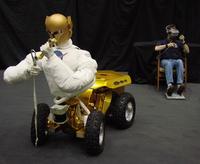
Electrical engineers have developed telerobotics technology which could make disaster response faster and more efficient. The researchers aim to combine existing “smart” technologies better to serve society during disaster and crisis response. This includes using teleoperated robots for rescues and safety operations; a high-tech dispatch system that gathers information from cameras and sensors and pushes it out to first responders; drones for damage surveillance and rescues; and vests outfitted with sensors and GPS tracking to be worn by search-and-rescue dogs.
-
-
Room-scouting robot to help first responders, soldiers
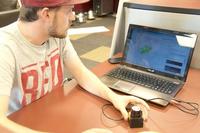
Firefighters, police officers, and military personnel are often required to enter rooms with little information about what dangers might lie behind the door. A group of engineering students at Arizona State University is working on a project which would help alleviate that uncertainty. The product they are building consists of a laser sensor attached to a motor that sweeps all the way around a room, taking 700-800 individual scans, each one with about 680 unique data points. This information is transmitted to a computer program that creates a picture of the room and all its contents. Whoever is controlling the sensor remotely can see and analyze the data in real-time, as it is being collected.
-
-
DARPA Grand Challenge: Ten years on
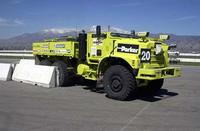
At the break of dawn on 13 March 2004, fifteen vehicles left a starting gate in the desert outside of Barstow, California, to make history in the DARPA Grand Challenge, a first-of-its-kind race to foster the development of self-driving ground vehicles. It is not easy to quantify the effects of these DARPA challenges on the development and deployment of autonomous vehicle technology, but ten years later defense and commercial applications are proliferating. The rapid evolution of the technology and rules for how to deploy it are being driven by the information technology and automotive industries, academic and research institutions, the Defense Department and its contractors, and federal and state transportation agencies.
-
-
Robots help Border Patrol navigate smugglers’ tunnels
The U.S. Border Patrol is using remote- controlled robots to navigate tunnels used by drug cartels and smugglers to import drugs, weapons, and people from Mexico into the United States.The robots are used as the first eyes on places deemed too dangerous for humans to explore.
-
-
Highly sensitive tactile e-whiskers for robotics, other applications
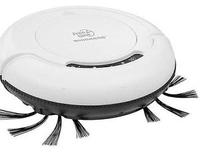
From the world of nanotechnology we have gotten electronic skin, or e-skin, and electronic eye implants or e-eyes. Now we are on the verge of electronic whiskers. Researchers have created tactile sensors from composite films of carbon nanotubes and silver nanoparticles similar to the highly sensitive whiskers of cats and rats. E-whiskers could be used to mediate tactile sensing for the spatial mapping of nearby objects, and could also lead to wearable sensors for measuring heartbeat and pulse rate.
-
-
Robots compete in performing emergency response task
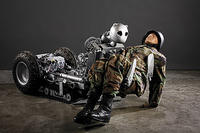
Sixteen robots participating in the DARPA Robotics Challenge Trials last month performed such tasks as opening doors or climbing a ladder, all tasks aimed to speed the development of robots that could one day perform a number of critical, real-world, emergency response tasks at natural and human-made disaster sites. While most of the entries were engineered to resemble humanoids with two legs, JPL’s RoboSimian tackled tasks like climbing over rough terrain on all four of its limbs.
-
-
Eight teams heading to DARPA Robotics Challenge finals

Two weeks ago, on 20-21 December 2013, sixteen teams were the main attraction at the DARPA Robotics Challenge (DRC) Trials, where they demonstrated their prototype robots’ ability to perform a number of critical real-world disaster-response skills. After two days of competition, the agency selected eight teams to receive up to $1 million in funding to continue their work and prepare for upcoming DARPA Robotics Challenge (DRC) Finals.
-
-
Sandia to show Mine Rescue Robot at 2013 DARPA Robotics Challenge
Engineers from Sandia National Laboratories will demonstrate real-world robotics successes at the DARPA Robotics Challenge Trials 2013 Expo this week (20-21 December) in Florida. The challenge is focused on human-scaled robots that assist in humanitarian aid and disaster response. Sandia engineers will demonstrate the Gemini Scout Mine Rescue Robot, which was designed to overcome dangers lurking in a mining accident: poisonous gases, flooded tunnels, explosive vapors, and unstable walls and roofs. Such potentially deadly conditions and unknown obstacles can slow rescue efforts to a frustrating pace.
-
-
Seventeen teams to compete in DARPA Robotics Challenge Trials
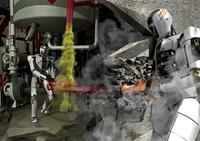
Four teams that built full robot hardware and software systems using their own funds qualified to join thirteen other teams to compete in the Defense Advanced Research Projects Agency (DARPA) Robotics Challenge (DRC) Trials. The event will take place 20-21 December at the Homestead-Miami Speedway in Homestead, Florida, where spectators can observe as the robots are tested on the capabilities that would enable them to provide assistance in future natural and man-made disasters.
-
-
Standardized performance tests for emergency response robots
Seventeen teams will be directing their emergency-response robots to perform eight basic tasks which were drawn from the Fukushima Daiichi response and then converted into standardized tests by researchers at the National Institute of Standards and Technology (NIST). A year later, the capabilities of robots that qualify in this year’s trials will be tested in a more realistic disaster scenario. In the winner-take-all finals, robots will perform all eight challenges consecutively. NIST engineers have been at the forefront of using standardized performance testing for emergency response robots used in bomb-response and for urban search-and-rescue operations. Since 2005, fifteen NIST tests have been adopted as standards by ASTM International, and about forty more are under various stages of development or review.
-
- All
- Regional
- Water
- Biometrics
- Borders/Immig
- Business
- Cybersecurity
- Detection
- Disasters
- Government
- Infrastructure
- International
- Public health
- Public Safety
- Communication interoperabillity
- Emergency services
- Emergency medical services
- Fire
- First response
- IEDs
- Law Enforcement
- Law Enforcement Technology
- Military technology
- Nonlethal weapons
- Nuclear weapons
- Personal protection equipment
- Police
- Notification /alert systems
- Situational awareness
- Weapons systems
- Sci-Tech
- Sector Reports
- Surveillance
- Transportation
Advertising & Marketing: advertise@newswirepubs.com
Editorial: editor@newswirepubs.com
General: info@newswirepubs.com
2010-2011 © News Wire Publications, LLC News Wire Publications, LLC
220 Old Country Road | Suite 200 | Mineola | New York | 11501
Permissions and Policies
Editorial: editor@newswirepubs.com
General: info@newswirepubs.com
2010-2011 © News Wire Publications, LLC News Wire Publications, LLC
220 Old Country Road | Suite 200 | Mineola | New York | 11501
Permissions and Policies
